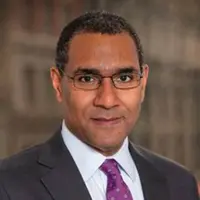
By Sean M. Decatur
Special to the Trice Edney News Wire from Global Information Network
(Trice Edney Wire/GIN) – Sean M. Decatur, recently appointed to head the American Museum of Natural History, is well aware of the obstacles that could await him in his new job.
It’s clear from an essay he wrote for the Chronicle of Higher Education titled “The Cost of Leading While Black.”
“If you are a Black person in America, you can measure with an egg timer how long it takes for an intense disagreement to lead to the invocation of racist tropes,” he wrote. “The dynamics of race in America are fractal: They can be observed at all scales, from the paths of power in Washington to the gravel paths of bucolic Gambier, Ohio.”
His current challenge will be to move forward with all due speed on the disposition of skeletons of indigenous and enslaved people taken from their graves and the bodies of New Yorkers who died as recently as the 1940s.
The museum is facing questions about the legality and the ethics of its acquisitions.
“Figuring out exactly what we have here is something that is important to do moving forward,” Decatur said.
“Human remains collections were made possible by extreme imbalances of power,” Decatur noted in a letter sent to staff members this week. “Moreover, many researchers in the 19th and 20th centuries then used such collections to advance deeply flawed scientific agendas rooted in white supremacy — namely the identification of physical differences that could reinforce models of racial hierarchy.”
Currently, the museum has three people involved in repatriating remains, although Decatur said part of his initiative is to focus more resources in this area.
Decatur discussed the desecration of the cemetery for enslaved people in his letter to the staff. The cemetery most likely dated back to colonial times and was excavated during construction in the Upper Manhattan neighborhood of Inwood. A photo from that time displays the skeletons that had been pulled from the ground. Workers formed a pyramid with the skulls.
In an interview, Decatur said he found the treatment of the bodies disturbing.
In his staff letter, the president said of the remains, “Identifying a restorative, respectful action in consultation with local communities must be part of our commitment.”
Recently, John Jay College professor Erin Thompson learned about the New York museum’s “medical collection” while conducting research into the ethical and legal questions that surround its holdings of remains. She was surprised to see the collection included New Yorkers who had died as recently as the 1940s.
Efforts to more fully research those remains were stymied by the museum, she said, which denied her access to its catalog.
Human remains currently on display in the museum range from skeletons to instruments and beads made from, or incorporating, human bones.
“None of the items on display,” Decatur said in his letter, “are so essential to the goals and narrative of the exhibition as to counterbalance the ethical dilemmas presented by the fact that human remains are in some instances exhibited alongside and on the same plane as objects.
“These are ancestors and are in some cases victims of violent tragedies or representatives of groups who were abused and exploited, and the act of public exhibition extends that exploitation.”















